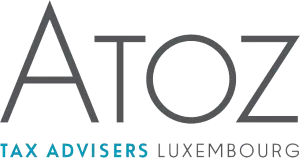OUR INSIGHTS AT A GLANCE
- In Luxembourg, tax consolidation allows the consolidation of the respective tax results of each integrated company so as to be taxed globally, as if they were a single taxpayer.
- Since 2015, the Luxembourg tax consolidation regime makes the distinction between the vertical consolidation where the results are consolidated at the level of an integrating parent company and the horizontal tax consolidation where the tax results are consolidated at the level of an integrating subsidiary company.
- The horizontal tax consolidation was introduced following a ruling of the CJEU released in 2014 in respect of the Dutch tax consolidation regime. Based on this ruling, few Luxembourg companies requested the application of the horizontal tax consolidation regime retroactively as from 2013.The benefit of such regime was however denied by the tax authorities and the taxpayers lodged appeals against the tax authorities' position.
- In the context of the litigation, legal technical issues have arisen about the EU compliance of the "old" tax consolidation regime, the requirement to end an existing vertical tax consolidation (with a potential retroactive effect if the 5 year period is not met) in order to benefit from the horizontal tax consolidation and the timing for requesting the application of the horizontal tax consolidation.
- All of them have been referred to the CJEU in order to be clarified and could have an impact on the current Luxembourg tax consolidation regime.
On 29 November 2018, the Luxembourg Administrative Court (the "Court") referred several questions to the Court of Justice of the EU ("CJEU") in respect of the Luxembourg tax consolidation regime.1 This case is interesting and worth delving further into it as it could result in an extension, or a confirmation, of the scope of the tax consolidation in Luxembourg in the near future.
Aim of the Luxembourg tax consolidation regime
In Luxembourg, tax consolidation is allowed for corporate income tax ("CIT") and municipal business tax ("MBT") purposes. The purpose of the tax consolidation is to allow Luxembourg companies of the same group (or of some of them only) to opt, under specific conditions, for a sort of consolidated taxation, without jeopardizing the patrimonial autonomy of the relevant companies under company law.
Tax consolidation allows the consolidation of the respective tax results of each integrated company prepared on a standalone basis so as to be taxed globally, as if they were a single taxpayer. Thus, losses of some companies can be offset with profits made by others. Tax consolidation scheme constitutes, in this respect, a departure from the tax law rule prohibiting any compensation or transfer of income between related companies. It is therefore clear that, in the spirit of the legislator, looking for a fiscal aim, namely the fiscal neutrality of a business structuring, is inherent to the implementation of a tax consolidation regime. From an anti-abuse perspective, the fact that tax consolidation is requested for the main purpose or one of the main purposes of obtaining tax advantage offered by such a regime, will never defeat the object or purpose of the applicable tax law which is precisely the granting of such a tax advantage/incentive.
The current Luxembourg tax consolidation regime
Luxembourg tax law allows groups of companies to opt for either a "vertical" or a "horizontal" tax consolidation.
- Vertical tax consolidation is available where a fully taxable Luxembourg resident company or a Luxembourg permanent establishment of a foreign company subject to a tax comparable to the Luxembourg CIT, called the integrating parent company, holds, directly or indirectly, at least 95% of the share capital in one or more Luxembourg resident fully taxable companies or holds a Luxembourg permanent establishment of a foreign company which is subject to a tax comparable to the CIT, the integrated companies.
- Horizontal tax consolidation is available to subsidiaries held at least at 95%, directly or indirectly, by the same non-integrating parent company. Integrating subsidiary and integrated subsidiaries can be Luxembourg resident fully taxable companies or a Luxembourg permanent establishment of a foreign company which is subject to a tax comparable to the Luxembourg CIT. The non-integrating parent company can be either a fully taxable Luxembourg company, a Luxembourg permanent establishment of a foreign company subject to a tax comparable to the Luxembourg CIT, a foreign company resident of another EEA country which is subject to a tax comparable to the Luxembourg CIT or a permanent establishment located in a EEA country, subject to a tax comparable to the Luxembourg CIT, of a foreign company which is subject to a tax comparable to the Luxembourg CIT.
Whereas in the vertical tax consolidation, parent company(ies) of the integrating company is/are not party(ies) to the tax consolidation, the agreement of the non-integrating parent company of the integrating company and a 95% shareholding threshold between them are required under the horizontal consolidation. These are the only differences between the two tax consolidation forms. From a tax point of view, in both cases, the tax results of the integrated companies are consolidated at the level of an integrating company (whether as parent or subsidiary) and the tax results of the "non-integrated" parent companies will not be affected. The integrating parent company (vertical consolidation) and the integrating subsidiary company (horizontal consolidation) are thus in the same situation: results of the integrated companies are consolidated at their level.
The Luxembourg tax law does not allow a company to simultaneously be part of more than one tax consolidated group. An integrated group is defined as either a group composed by the integrating parent company and the integrated company(ies) or composed by the integrating subsidiary company and the integrated company(ies).
When the shareholding is held indirectly, it is required that the intermediary companies through which the integrating or non-integrating parent company hold 95% of the share capital of the company to be integrated in the tax consolidation, are corporate companies fully subject to an income tax comparable to CIT.
To avoid any abuse, special rules apply to the deductible losses of companies that opt to be fiscally integrated. The carry forward of tax losses, realized before a tax consolidation is put in place, is limited to the aggregate amount of positive income realized during the tax consolidation by the company that originally incurred the losses. Following the termination of the tax consolidation, tax losses generated during the tax consolidation can only be used by the integrating entity.
Tax consolidation is only available upon filing a written request with the Luxembourg tax authorities, filed by the integrating company, the integrated entities subject to the tax consolidation as well as by the non-integrating parent company in case of horizontal tax consolidation. Tax consolidation is effective retrospectively as of the beginning of the fiscal year during which the tax consolidation was requested. The option must be exercised for at least five subsequent fiscal years. If conditions are not fulfilled during the full period of 5 years, the benefits of the tax consolidation are lost, retroactively.
Footnotes
1 Case n°40632C
To view the full article, please click here
The content of this article is intended to provide a general guide to the subject matter. Specialist advice should be sought about your specific circumstances.


